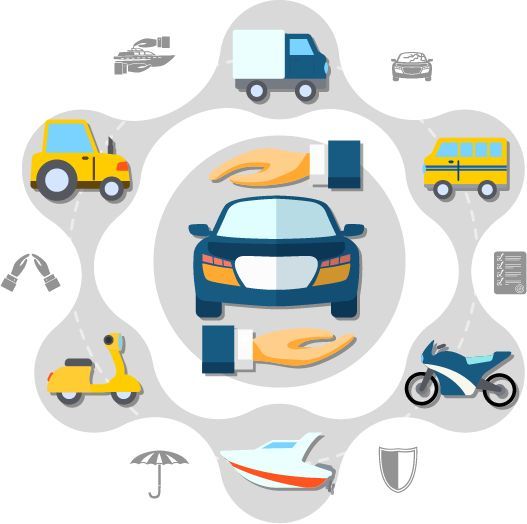Best Income Protection Insurance serves as a crucial financial safety net, designed to help secure your income if an illness, injury, or disability prevents you from working. This type of insurance provides a regular income, ensuring that you can still manage essential expenses during challenging times. Given the range of policies available, selecting the best income protection insurance can be key to keeping you and your family financially secure in uncertain times.
This guide explores how income protection insurance works, the advantages it offers, the various policy types available, and the essential factors to consider when choosing a plan. Whether you’re self-employed, run a business, or work as an employee, this article will help you make an informed choice to protect your income and financial wellbeing.
Understanding Best Income Protection Insurance:
Best Income Protection Insurance offers a replacement income if an illness or injury prevents you from working. Typically, this insurance provides a portion of your usual income, allowing you to cover essential expenses while you recover. Unlike lump-sum insurance payouts, income protection gives you consistent monthly payments to help with things like:
- Rent or mortgage payments
- Utility bills
- Everyday living expenses
- Health care costs not covered by other insurance
Each policy has its own terms for benefit amounts and coverage duration, making it essential to choose one that aligns with your individual needs.
Key Advantages of Income Protection Insurance:
Income protection insurance can be incredibly beneficial at various stages of life. Here’s why it’s a valuable part of financial planning:
1. Financial Security During Recovery:
A key benefit of Best Income Protection Insurance is the financial stability it offers while you’re unable to work. By receiving a steady income during your recovery, you can manage your expenses without added financial stress, allowing you to focus on regaining your health.
2. Flexible Policy Choices:
Many income protection policies allow for flexibility in both benefit and waiting periods. The waiting period refers to how long you’ll wait after a claim is filed to receive your first payment, while the benefit period is the maximum duration for which payments are made. This flexibility allows you to adjust the policy according to your budget and preferences.
3. Customization for Your Needs and Budget:
Best Income Protection Insurance is designed to accommodate different lifestyles and financial situations. With multiple policy levels available, you can find coverage that fits your specific income, family needs, and occupation risks.

Types of Income Protection Insurance:
Choosing the best income protection insurance often depends on factors such as your health, occupation, and financial needs. Here’s a breakdown of the common types of policies:
1. Accident-Only Coverage:
This policy covers loss of income specifically from accidental injuries. It often has lower premiums since it excludes illness as a cause for claims.
2. Illness-Only Coverage:
This option provides benefits if you cannot work due to sickness or medical conditions, ideal for individuals with a higher risk of certain illnesses.
3. Comprehensive Coverage:
Comprehensive policies cover both illness and accidents, offering broad protection against anything that may prevent you from working. Although more expensive, this type of policy is generally the most extensive.
Important Considerations When Choosing the Right Policy:
1. Benefit Amount and Duration:
The benefit amount refers to how much you’ll receive each month while your claim is active, often around 50-70% of your pre-tax income. The benefit period, or how long payments will continue, ranges from a few years up to retirement age. While longer benefit periods increase premiums, they also offer more long-term security.
2. Waiting Period:
The waiting period is the time you’ll wait between the onset of your illness or injury and the start of your benefit payments. Typical waiting periods vary from 30 to 180 days, with longer waiting times often resulting in lower premiums but requiring some savings to bridge the gap.
3. Coverage Level:
Providers offer various coverage levels, from basic policies with essential benefits to more premium plans with comprehensive options. Some policies include “own occupation” cover, which provides benefits if you can’t perform your specific job, while others may require you to be unable to work in any job to receive payments.
4. Policy Limitations and Exclusions:
Understanding a policy’s exclusions is essential. Common limitations include pre-existing conditions, certain occupations, or lifestyle factors. Knowing these details beforehand can prevent unexpected issues when filing a claim.
Top Income Protection Insurance Providers:
Here are some leading providers known for their strong income protection insurance options, affordability, and high customer satisfaction:
1. Provider A: Flexible Options:
Provider A offers highly customizable policies, allowing for different benefit and waiting periods. Their policies cover a wide range of illnesses and injuries, with both short- and long-term income protection options.
2. Provider B: Comprehensive Illness and Accident Coverage:
Provider B specializes in comprehensive policies covering both illnesses and accidents. Their plans cater to high-risk occupations, making them an excellent choice for physically demanding or hazardous jobs.
3. Provider C: Affordable Policies
Provider C is well-regarded for its budget-friendly plans with solid coverage. These policies include essential income protection features and can be adjusted as your financial needs change over time.
Steps for Applying for Income Protection Insurance:
If you’re ready to apply for income protection insurance, here are the basic steps involved:
- Determine Your Financial Needs: Decide how much coverage is necessary to replace lost income.
- Research Providers: Compare different providers by looking at their benefits, exclusions, and customer feedback.
- Select Your Coverage Type: Choose between accident-only, illness-only, or comprehensive cover based on your needs.
- Consult an Insurance Broker: A broker can provide expert advice, helping you select the best plan for your situation.
- Complete the Application: Fill out the application and undergo any necessary health assessments.
Why Income Protection Insurance is Worth the Investment:
Best Income Protection Insurance is a smart investment for securing your financial future. Unlike life insurance, which pays out after death, income protection provides direct support while you’re alive, helping you maintain your financial independence when you’re unable to work.
For those with families, mortgages, or dependents, income protection insurance brings peace of mind by ensuring loved ones won’t face financial challenges due to unforeseen health issues.
Conclusion:
Selecting the best income protection insurance involves carefully assessing your unique needs, financial responsibilities, and potential risks. By choosing a policy aligned with your lifestyle, you can help protect yourself and your family against financial instability. Take time to compare options, consult experts if needed, and invest in an insurance plan that offers dependable, long-term protection.

